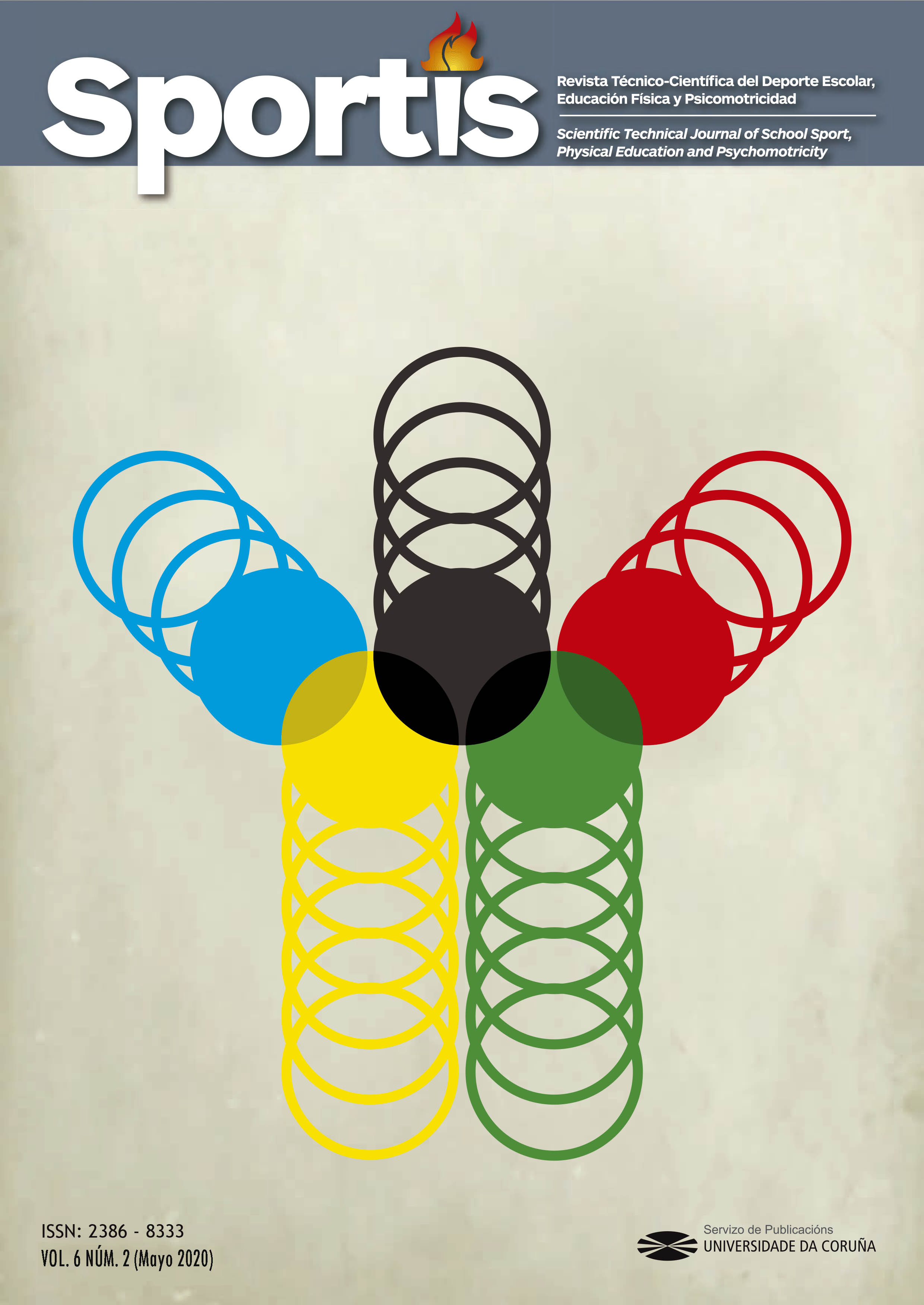Innovations didactics in Physical education, observation with the software LINCE PLUS
Main Article Content
Abstract
Digital resources and the incorporation of information and communication technologies (ICT) facilitate the autonomous learning of students in the classroom and increase their motivation causing an improvement in learning. Physical education teaching professionals are not excluded from the incorporation of ICTs in their professional practice to favour the cooperative learning of students and co-evaluation, encouraging the development of their motor skills. The objective of this work is to propose the introduction of films made by students and their subsequent analysis through a technological resource and free tool, the LINCE PLUS software. The teacher proposes in groups the execution of a skill and the coevaluation of their peers with the video recording, through mobile phones or tablets, and their subsequent observation and analysis with the tool, improving the process of autonomous and cooperative learning about their own motor executions. Through this immersive experience there is an increase in the motivation of the students and the generation of a new scenario where the students get a direct feedback on their execution, favouring the learning process by discovery and the coevaluation action in a motivating process for teaching-learning.
Keywords:
Downloads
Article Details
References
Carlsen, A., y Maslo, E. (2018). "Growing together": A Latvian retrospective of learning opportunities created in the cooperation among Nordic and Baltic adult educators. International Review of Education, 64(4), 489-518. DOI: https://doi.org/10.1007/s11159-018-9725-y
Camerino, O., y Buscà, F. (2011). Las tecnologías de la información y la comunicación (TIC) en la formación de los graduados en Ciencias de la Actividad Física y el Deporte, el e-diario académico. Apunts. Educación Física y Deportes, 104, 28-36. DOI: https://doi.org/10.5672/apunts.2014-0983.es.(2011/2).104.03
Camerino, O., Valero-Valenzuela, A., Prat, Q., Manzano, D., y Castañer, M. (2019). Op-timizing Education: A Mixed Methods Approach Oriented to Teaching Personal and Social Responsibility (TPSR). Frontiers in Psychology, 10, 14-39. DOI: https://doi.org/10.3389/fpsyg.2019.01439
Carlsen, A., y Maslo, E. (2018). “Growing together”: A Latvian retrospective of learning opportunities created in the cooperation among Nordic and Baltic adult educators. International Review of Education, 64(4), 489-518. DOI: https://doi.org/10.1007/s11159-018-9725-y
Fernández-Espínola, C., y Ladrón-de-Guevara, L. (2016). El uso de las TIC en la Educación Física actual. Revista de Educación, Motricidad e Investigación, 5, 17-30. DOI: https://doi.org/10.33776/remo.v0i5.2740
Gabin, B., Camerino, O., Anguera, M. T., y Castañer, M. (2012). Lince: Multiplatform Sport Analysis Software. Procedia - Social and Behavioral Sciences, 46, 4692-4694. DOI: https://doi.org/10.1016/j.sbspro.2012.06.320
González-Cutre, D. (2017). Estrategias didácticas y motivacionales en las clases de educación física desde la teoría de la autodeterminación. Revista de Educación, Motricidad e Investigación, 8, 44. DOI: https://doi.org/10.33776/remo.v0i8.3268
Jian, Q. (2019). Effects of digital flipped classroom teaching method integrated cooperative learning model on learning motivation and outcome. Electronic Library, 37(5), 842-859. DOI: https://doi.org/10.1108/EL-02-2019-0024
Prat, Q., y Camerino, O. (2012). Las tecnologías del aprendizajey el conocimiento (TAC) en la educación física, la WebQuest como recurso didáctico. Apunts. Educación Física y Deportes, 109, 44-53. DOI: https://doi.org/10.5672/apunts.2014-0983.es.(2012/3).109.04
Prat, Q., Camerino, O., y Coiduras, J. (2013). Introducción de las TIC en educación física. Estudio descriptivo sobre la situación actual. Apunts: Educación física y deportes, 113, 37-44. DOI: https://doi.org/10.5672/apunts.2014-0983.es.(2013/3).113.03
Prat, Q., Camerino, O., Castañer, M., Andueza, J., & Puigarnau, S. (2019). The Personal and Social Responsibility Model to Enhance Innovation in Physical Education. Apunts. Educación Física y Deportes, 136, 83-99. DOI: https://doi.org/10.5672/apunts.2014-0983.es.(2019/2).136.06
Soto, A., Camerino, O., Iglesias, X., Anguera, M. T., y Castañer, M. (2019). LINCE PLUS: Research Software for Behavior Video Analysis. Apunts Educació Física i Esports, 137, 149-153. DOI: https://doi.org/10.5672/apunts.2014-0983.es.(2019/3).137.11
Terrenghi, I., Diana, B., Zurloni, V., Rivoltella, P. C., Elia, M., Castañer, M., Camerino, O., y Anguera, M. T. (2019). Episode of Situated Learning to Enhance Student Engagement and Promote Deep Learning: Preliminary Results in a High School Classroom. Frontiers in Psychology, 10. DOI: https://doi.org/10.3389/fpsyg.2019.01415
Valcarce, M., y Díez, C. (2018). Influencia de una app en la adherencia a la práctica deportiva: Protocolo de estudio. Revista de Educación, Motricidad e Investigación, 11, 16. DOI: https://doi.org/10.33776/remo.v0i11.3416
Valencia, P. B., y García, C. C. (2017). Análisis de las relaciones entre los climas motivacionales y las necesidades psicológicas básicas en Educación Física. Revista de Educación, Motricidad e Investigación, 0(9), 3-12. DOI: https://doi.org/10.33776/remo.v0i9.3196
Womersley, L., y May, S. (2006). Sitting posture of subjects with postural backache. Journal of Manipulative and Physiological Therapeutics, 29(3), 213-218. DOI: https://doi.org/10.1016/j.jmpt.2006.01.002






